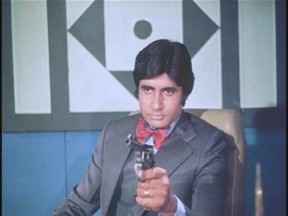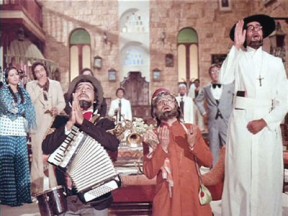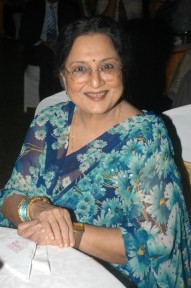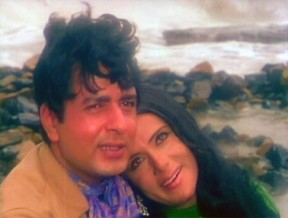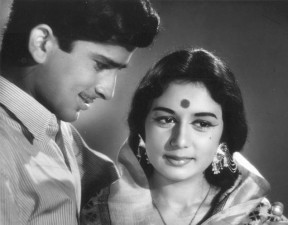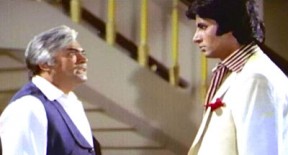In the 70s and the 80s, when I was growing up in Patiala, a framed poster next to a small shop near Sheran Wala Gate (a prominent locality), routinely heralded the arrival of a new film in town. On my way to the school in rickshaw everyday, I would watch that poster, trying to guess the story line of the film, wondering if I would get to watch it over the weekend.
If the film was a hit, a fresh piece of paper would be stuck below it every Friday to proclaim, “sixth superhit week!” And many films went on to cross the 25th week mark. Amar Akbar Anthony, Don and Kranti to name a few. The thrill of discovering a hit film then, was an absolutely organic experience. Noone told us which film was worth the trip to the cinema hall. We just knew. We smelt a good film, discovered it with joyous excitement, scene by scene, one moment to another. I remember watching Amitabh Bachchan in a trailer of Don during the interval of some forgettable movie and there was instant electricity in the hall.
Yes, there were film critics like Iqbal Masood but reading them was more of an academic exercise. Films ran or failed because they deserved to. I still remember, how obliging cinema hall owners would put extra chairs to accommodate more people if a film was going house-full. When a film clicked, the absolutely charged atmosphere in the cinema halls owed nothing to five star ratings or to self-appointed cinema critics gesticulating on TV.
Or to film stars who now routinely appear in reality shows to talk about their next big release. Before the days of media overkill, the only way a producer could promote and publicise his product was through ‘prayojit karyakram‘ or sponsored programmes on AIR (All India Radio). Ameen Sayani was the voice of cinema and his Binaca Geet Mala (which became Cibaca Geet Mala later) remained the definitive count down show for decades. Before Sayani, there was Sunil Dutt who went as Balraaj on Radio Ceylon and interviewed many film stars.
We savoured rare TV appearances of legends like Dilip Kumar who interviewed Noorjehan on a blue moon day on Doordarshan and there was ofcourse the ebullient Tabassum, India’s first celebrity interviewer, speaking to film actors in her show Phool Khile Hain Gulshan Gulshan for which she was paid a tuppence.We did not hear the din of commerce then or the grind of PR machineries that today report which star appeared commando in public, which heroine is on a leaf and juice diet and who was offered multiple crores to dance at a wedding. Product endorsements were exceptions to the rule and there was only one key award to be won. Despite rumours that certain actors bought thousands of Filmfare copies to rig the results in their favour, winning a trophy then was a big deal unlike today when awards are distributed like candy.
Things, to state the obvious, have changed. It is no longer enough to make a film. You need to cut through the foggy chaos of excessive marketing and strike a clinical blow so that the audience is lured atleast in the first week to come and watch a film regardless of its merit. Someone who understands this to perfection is Aamir Khan who promoted two diverse genres of cinema in Ghajini and Peepli [Live] with the same single mindedness. He played the barber to the gallery in the first instance, razoring submissive skulls in multiplexes.
He played conscientious producer to the discerning audience and the critics in the second so what if in the process, he alienated Anusha Rizvi, the director of the film. He produced the film afterall, did he not and more than the creative integrity of the director, what mattered to him was that the film was a commercial and a critical success. He then played to our reverse psychology, saying that his wife’s film Dhobi Ghaat was not for the masses. The reviled masses ofcourse were targetted during the publicity of Delhi Belly with four letter words passing off as conversation. And they obliged by making the film a big hit.
Marketing is critical to the success and failure of a film and yet, the reruns of some of the cult classics from the 70s on TV make more money than many relentlessly publicised films do on the big screen. The reason why so many old songs are resurfacing to sell colas and cars, why Hindi film stars of yore, even the less successful ones, seem to have more gravitas than many superstars of today is because in those days, cinema was a purveyor of effulgent magic, of passion, a joy for life, lasting memories and something you can not today put a finger on.
How can you explain Kaifi Azmi’s Tum Jo Mil Gaye Ho to a generation growing up on Emotional Attyachar? It seems incredible today that at one point, the history of Hindi cinema was being written by the likes of Kaifi and Sahir. By Salim-Javed who remain unsurpassed as the masters of note perfect pauses and punchlines. By towering musical legends like RD Burman, Laxmikant Pyarelal, Kalyanji Anandji, Madan Mohan and counting. By the likes of Yash Chopra, Manmohan Desai and Prakash Mehra who ensured that a gawky outsider like Amitabh Bachchan socked us in our collective gut and branded us for life.
Then actors like Shashi Kapoor and Nanda smiled straight into the camera despite imperfect teeth because they had unvarnished, unstudied charm that no amount of cosmetic interventions and Botox can duplicate. No heroine was size-zero then and heroes like Vinod Khanna and Dharmendra did not have to flaunt eight-packs to evoke musky masculinity.
Things change and yes, nostalgia gilds the past and forgives most of its transgressions. We cannot say that the content we loved and celebrated 30 years ago will pass muster today. Cinema is smarter today, edgier on its better days and we do have writers, directors, actors and music directors who will be recalled fondly by future generations but something has irrevocably gone amiss from our cinema.
Something that can only be identified as innocence. The posturing, the hard selling, the meticulous packaging of cinema has somehow killed its spontaneity. There is Farah Khan trying to recall the jovial Mukul Anands, the wilfully mad Manmohan Desais and the colour drenched 80s with her brand of cinema but nothing can quite match the thrill of watching Sanjeev Kumar, Shashi Kapoor and Amitabh Bachchan lock energies in the same frame in Trishul. Somehow Munni cannot outdance Monica. Sheela is no patch on Jumma. Even Amitabh Bachchan cannot outdo his own benchmarks. Does anyone throw coins at the screen anymore? Does anyone dance in the aisles like they did when Mohini went Ek Do Teen? Will anyone suspend disbelief anymore if a heroine drives her tonga on one wheel to the beat of Pandit Samta Prasad’s tabla?
There is a multiplex coming up next to my apartment in Bangalore and somehow it should bring me back in touch with Hindi films. And yet, the glass encased glitzy, larger-than-life posters cannot recreate the same excitement I felt when one little piece of paper stuck beneath a hand-painted poster announced “25th hit week!”
Reema Moudgil is the author of Perfect Eight (http://www.flipkart.com/b/books/perfect-eight-reema-moudgil-book-9380032870?affid=unboxedwri )
This story was carried in her column in http://tlfmagazine.com/






